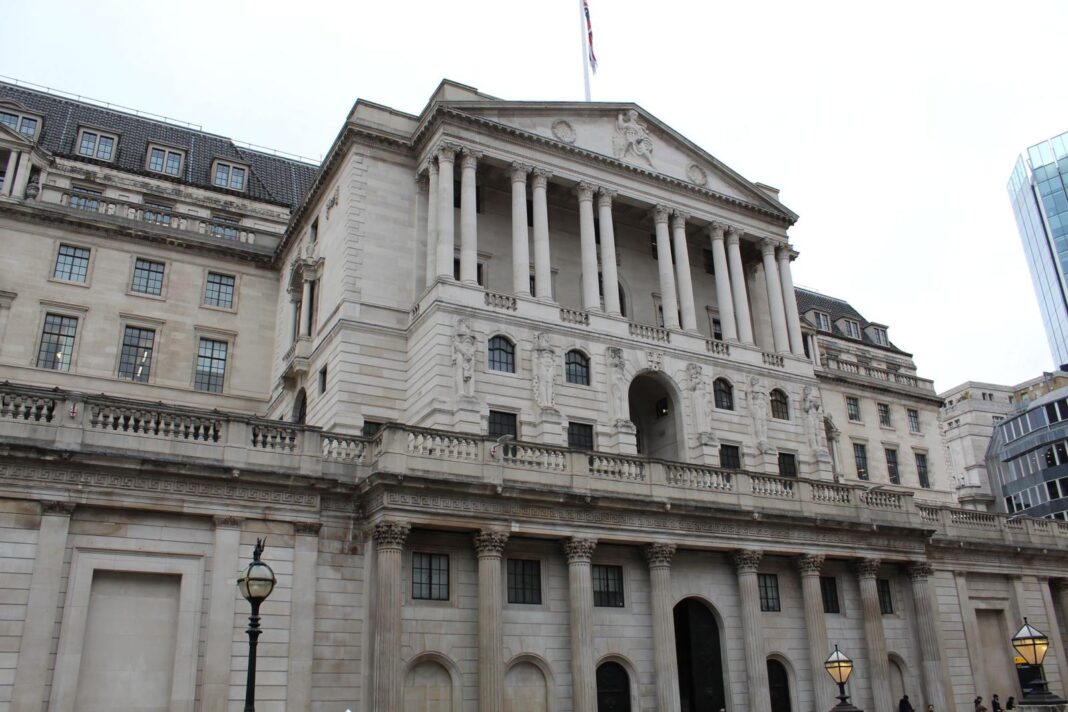The Bank of England’s decision to cut the Bank Rate by 25 basis points to 4.25% marks the first step in a delicate policy recalibration, as the Monetary Policy Committee (MPC) begins to unwind its historically tight stance.
But the narrow 5 – 4 vote split – and the arguments behind it – highlight just how uncertain the path ahead remains.
At face value, the economic backdrop appears to justify a modest cut. Headline inflation eased to 2.6% in March, edging closer to the Bank’s 2% target. Wage growth has cooled from last year’s peaks, and economic activity remains subdued.
The labour market, once a persistent source of inflationary pressure, is loosening. Taken together, these indicators suggest that the UK’s disinflation process is broadly on track.
DEEPER DISAGREEMENTS
Yet beneath the surface, the MPC’s divisions speak to deeper disagreements over the strength and sustainability of this trend.
Two members, Catherine Mann and Huw Pill, opted to hold rates at 4.5%, citing lingering domestic inflation pressures and firm household inflation expectations.
Their concern is that loosening too early could risk re-anchoring inflation above target, particularly as global energy prices and regulated utility bills are set to rise again in the second half of the year.
MORE DECISIVE
In sharp contrast, Swati Dhingra and Alan Taylor pushed for a more decisive 50 basis point cut, warning that maintaining a restrictive stance for too long could widen the output gap unnecessarily.
They pointed to the one-off nature of upcoming price increases and noted that private sector wage growth is converging towards levels consistent with price stability.
Between these poles, the majority of the Committee – led by Governor Andrew Bailey – opted for a middle ground.
Their 25 basis point cut reflects a calculated pivot: a signal that the era of monetary tightening may be ending, but also a hedge against complacency in the face of persistent risks.
COMPLEX TIMES
Geopolitical developments have added further complexity. The MPC minutes make clear that rising trade tensions – following a new wave of US tariffs and retaliatory measures from major economies – were instrumental in tipping the balance for some members.
While the inflationary impact of tariffs remains uncertain, the risk to global growth is unambiguously tilted to the downside. That, too, supports a more accommodative stance.
Still, the MPC is at pains to stress that this is no return to the rapid easing cycles of the past. There is no pre-set path.
The Committee’s guidance is clear: future rate cuts will be gradual, data-dependent, and contingent on further progress in anchoring inflation expectations.
For businesses and households, the implications are mixed. The rate cut offers some relief – particularly to mortgage holders and corporate borrowers – but the Bank is unlikely to move quickly. Monetary policy will remain in restrictive territory for some time.
Markets may cheer the beginning of a new phase, but this is a pivot in slow motion. Until inflation risks are fully neutralised, the Bank’s bias remains firmly towards caution.
INDUSTRY REACTION

Jean Jameson, Chief Sales Officer for Foxtons, says: “Whilst a cut was widely expected today it will still fuel the property market momentum that has been building over much of the last year and, with interest rates now trending downwards, we can expect to see homebuyers acting with an even greater level of confidence over the coming months.
“Those coming to the end of a fixed term are also set to benefit and we’ve seen rates already start to fall in the lead up to today’s decision, with many lenders reintroducing sub four percent mortgage products, driven by increased mortgage provider competition.
“With a greater degree of mortgage affordability fueling the market, it’s looking to be a very positive year and the expectation is that house prices will continue to hold firm on their current upward trajectory.”
SHOT IN THE ARM

Jeremy Leaf, north London estate agent and a former RICS Residential Chairman, says: “With so much media speculation over the past few weeks, and the need to boost economic growth because of the talk surrounding tariffs, any cut to base rate today has already been largely factored in by homebuyers.
“Nevertheless the reduction will serve as a welcome shot in the arm to activity which has been flagging lately since the stamp duty concession was removed at the end of March.”
MOTIVATED BUYERS

Matt Thompson, Head of Sales at Chestertons, says: “With interest rates now at 4.25%, more rate cuts on the horizon and a number of lenders offering sub-4% mortgages, the property market will undoubtedly see an increase in buyer activity.
“Particularly motivated will be first-time buyers who were unable to secure a property ahead of the changes to Stamp Duty thresholds and will see the lower interest rates as a window of opportunity to resume their search.
“House hunters who are in no rush, might wait until the Bank of England announces another rate cut but as buyer demand strongly outweighs the number of available properties, this strategy could see some buyers missing out.”
WELCOME NEWS

Nathan Emerson, Chief Executive of Propertymark, says: “This news will no doubt be extremely welcome for many, especially given current economic uncertainties. International bodies have recently stated they expect interest rates to fall in the UK as the year progresses.
“Overall, we hope to see interest rates further continue their downward trajectory over the course of 2025.
“The UK housing market has recently been buoyed by stamp duty threshold changes leading up to the start of April, and with the busier spring and summer months now here, this base rate reduction should attract even more buyers and sellers to the market and provide greater affordability.
“Housing is a central part of the UK economy, and we now hope to see considering the UK Government and the devolved administrations have shown a keen focus on housing growth, is that they look ahead to achieving their individual housebuilding targets to meet growing demand.”
GROWING EXPECTATIONS

Kevin Shaw, National Sales Managing Director, LRG, says: “The much-anticipated reduction in interest rates is a welcome shot in the arm for the housing market and well timed given the stamp duty changes at the end of March.
“At LRG we have seen a strong start to 2025 in all regions with sales up nearly 10%.
“Factoring in a lower cost of borrowing will, we anticipate, give fresh momentum to the market as we move towards the summer months.
“The MPC, given the instability in the global economy, has appreciated the need to react quickly and there is now an expectation that interest rates will fall to around 3.5% by the end of this year which will further boost both confidence and sentiment.
COULD BE BUMPY

Tom Bill, head of UK residential research at Knight Frank, says: “Demand has increased as more mortgage rates drop below 4%, which will underpin prices while the momentum is maintained.
“Tariff turbulence has helped push interest rate expectations lower but buyers could be put off if it gets too bumpy.
“Inflation caused by new measures such as higher employer national insurance costs remains a risk, which means rates could start heading in the wrong direction again. For now, demand remains solid, especially in needs-driven markets.”
FIRST-TIME BUYER HELP

Tim Foreman, Managing Director of Land and New Homes, LRG, says: “The reduction in rates is very welcome. It’s all too well-known that housebuilding figures are way below where they need to be to meet the government’s ambitious targets – in fact they’re even below housebuilding output last year.
“This is due to many factors, including build costs, finance costs and a lack of demand in the market. The reduction in interest rates, not only today but, we anticipate, in a series of decisions over the next year, will help address each of these factors and result in a more buoyant housing market.
“And growth in the property market isn’t just down to economics – it’s also important to consider the psychological aspect to the housebuilding process. Sentiment is a huge factor in stimulating the market. People need to feel safe in their decision-making and having more security in their borrowing is an important factor.
“Issues will remain. Specifically, there is an urgent need to help first time buyers get a foothold on the property ladder. But today’s news is welcome news.
IMPORTANT MESSAGE

Jason Tebb, President of OnTheMarket, says: “With inflation falling in March, indicating that it is seemingly under control even if still above the 2% target, the rate setters had no real reason to hold rates again.
“A reduction in interest rates sends an important message to buyers and sellers, enabling them to plan ahead with more confidence. It should ease affordability and boost the housing market, leading to an improvement in activity and transaction levels.
“With the stamp duty concession ending in March, expected further rate reductions should give the market welcome added momentum as the year progresses.”
AFFORDABILITY BOOST

Amy Reynolds, head of sales at Richmond estate agency Antony Roberts, says: “A rate cut helps the housing market hugely as it gives borrowers an affordability boost, filtering through to lower mortgage rates, which encourage activity.
“The Bank of England was widely expected to cut rates this month, and with borrowing costs remaining high compared to the pre-2022 norm, this is a welcome move.
“The stamp duty holiday has helped transaction levels with an increase in sales agreed in those chains where there is a first-time buyer keen to take advantage of the discount before the end of March.
“While this has been welcome, there have been concerns that once the stamp duty holiday ends, there will be a dip in activity and transactions, which is why the timing of this rate cut is so important.”











